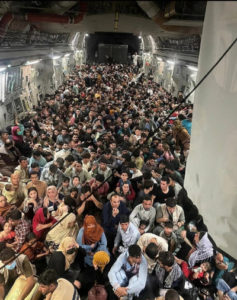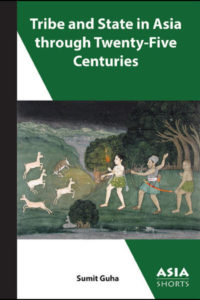EAA and Afghanistan: Nine Years Ago

None of us live in our past, so major developments could occur, even the day this EAA Digest is published, impossible for any of us to predict. That said, the events of recent weeks incentivized me to revisit and read parts of the National Geographic Society-sponsored EAA special section “Afghanistan: Multidisciplinary Perspectives” (volume 17, number 2, fall 2012).
Two authors with impressive expertise on Afghanistan and the ability to write for educated lay people as well as high school and university students were each solicited to write separate essays entitled “What History Can Teach Us About Contemporary Afghanistan.” Those teachers who are looking for well-done, concise, and high quality contextual articles for themselves and their students that provide some foundation to think more deeply about unfolding events in Afghanistan that will potentially affect not only Afghanistan and the US, but much of the world, are highly encouraged to read the essays by Thomas Barfield and Thomas Gouttierre.
Thomas Barfield, Boston University Anthropologist and President of the American Institute of Afghanistan Studies, is an internationally recognized scholar and the author of several books on Afghanistan including Afghanistan: A Cultural and Political History. Barfield frames his essay with three key generalizations: 1) Afghanistan’s history transcends the boundaries of the current nation state (note the Empires, States, and the Afghanistan Region timeline); 2) Afghanistan’s history has longer periods of peace than violence; and 3) Foreigners first attempt to remake Afghanistan in their own image, but discover the virtues of doing things the Afghan way when they wish to leave. Regarding generalization number 3, Washington conformed to London’s and Moscow’s pattern of successful invasions of Afghanistan, but teachers and students might be able to assess in the coming months if US policymakers seem to be subsequently interacting with Afghan authorities in ways similar or substantially different as that of their foreign predecessors.
After reading Barfield’s essay, EAA readers might want to share this August 16th, 2021 Boston University online interview with the author and two other Afghanistan specialists (a BU faculty member, and the Director of the University of Nebraska at Omaha Center for Afghanistan Studies) on their reactions to the Biden administration’s withdrawal process as it unfolded recently.
Now retired, Thomas Gouttierre was Director of the aforementioned University of Nebraska at Omaha Center for Afghanistan Studies when he wrote his EAA essay. Gouttierre’s extensive experience in Afghanistan included serving as a Peace Corps Volunteer, a Fulbright Fellow, and as Executive Director of the Fulbright Foundation. He also testified on Afghanistan-related topics, Pakistani relations, and International Terrorism, to both the US Senate and House of Representatives as well as the British Parliament and the French National Assembly.
Gouttierre’s essay focuses upon the twentieth and twenty-first centuries, especially 1963–2009. According to the author, many urban Afghans viewed 1963–1973 as their country’s “Golden Age” characterized by significant educational opportunities for men and women (more than 60 percent of teachers and government employees in Kabul were women). Cold War competition and, surprisingly, cooperation at times between the US and the USSR led to funding for various development projects, as well as safety in the cities. The Soviet Union constructed the Kabul Airport and the US built the Kandahar Airport. Duke Ellington and his orchestra played in Kabul sponsored by the US government, and a reform-minded King worked with American-educated Afghans to develop a progressive constitution and modernize the country. In 1973, things changed with a coup by a strongman who went on to anger elements of the Afghan military and the USSR. The ensuing December 1979 USSR invasion of Afghanistan increased tensions in the region, resulted in seven million Afghan refugees fleeing to Pakistan and Iraq, and set in motion a series of unintended consequences and political stalemate that helped bring about the Taliban, Islamist terrorism, 9/11, and the subsequent American invasion.
Readers interested in Gouttierre’s commentary on recent events can read this short, poignant, and specific July 19th, 2021 reaction that appeared in the Omaha World Herald.
Although these essays are particularly recommended because of their applicability to survey-level history and international issues, instructors, students, and readers particularly interested in Afghanistan should explore the entire fall 2012 issue.
Other Teaching Resources: “Why Afghanistan’s Tribes Beat the United States”

Although alluded to in both recommended essays and specifically in two other articles in the fall 2012 EAA, “tribes” and kinship networks have consistently been a robust form of political organization that foreign experts seemingly always downplay. This recent Foreign Policy essay “Why Afghanistan’s Tribes Beat the United States” features Sumit Guha’s Tribe and State in Asia through Twenty-Five Centuries, the most recent AAS Asia Shorts publication. EAA readers will learn more about this topic in the essay and Sumit Guha’s recently published book.
This article was published as part of the August 2021 EAA Digest.

